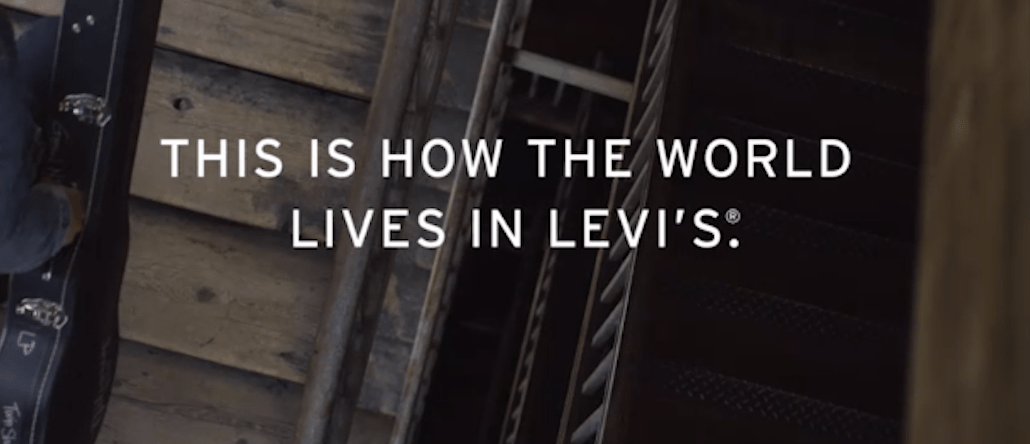
Denim has a special place in the heart of American textile, and one company at the center of the affection is Levi Strauss. But while brand affinity and nostalgia counts for something in the age of the millennial, it doesn’t necessarily drive sales, especially when the company has lagged behind in digital innovation.
But Levi’s — which doesn’t have a mobile app — has stepped it up in the digital space by choosing a smart collaboration. Google announced at the Google I/O 2015 last Friday that it would be partnering with Levi’s for its Project Jacquard, a techie line of products to roll out in 2016 that will turn Levi’s clothing into wearables that sync with your phone and tablet, akin to the Apple Watch.
Paul Dillinger, vp of innovation for Levi’s, told Women’s Wear Daily that Project Jacquard was “the opportunity to get our faces out of our phones, to be engaged in the real world again, to watch a concert instead of recording one.”
The dive into innovation comes at a time when Levi’s sales are slipping. Its first earnings call of 2015 reported a 7 percent drop in net sales year-over-year, despite a push to encourage e-commerce in 2014. And while a spike in the vintage denim market has put Levi’s on the legs of “It” girls like Bella Hadid and Kendall Jenner, Fashionista reported earlier this month that it’s not the company that’s profiting but rather the resellers and collectors that facilitate the classic jeans’ repurposing.
With Project Jacquard, Google will literally weave technology into the very fabric of Levi’s jeans and other clothing in order to turn it into a responsive wearable. It fits nicely with Levi’s current “Live in Levi’s” campaign, which encourages customers to do more than simply wear the clothes. The tech turns your pants into a mobile platform for Bluetooth and a power source, among other features that have yet to be revealed. It’s Google Glass for your ass.
Google bells and whistles aside, it remains to be seen whether these innovations will be more than mere gimmickry. In order to stick, the innovations need to actually be useful, said Ruth Bernstein, founder of Yard, a creative agency not working with Levi’s.
“The usability of the products that come out of Project Jacquard will be crucial to its success,” said Bernstein. “As a true American workwear brand, Levi’s clothing is already highly functional, so there is a high expectation that any innovation should be led by function over fluff.”
Ad position: web_incontent_pos1
Last year, Levi’s centered its digital campaign push around Live in Levi’s, a standalone website dedicated not to e-commerce but to social engagement (Levis.com is the dedicated e-commerce site). LiveinLevis.com houses photos and video content surrounding new celebrity campaigns, and pulls Instagram photos from fans who tagged shots with #LiveinLevis.
Levi’s CMO Jennifer Sey told Adweek in 2014, when the website was launched, that the idea of the site was to guide the brand’s social engagement toward driving e-commerce sales. But the idea to build a dedicated site around social buzz played out more as fluff, rather function.

On Live in Levi’s website, browsers will be out of luck if they want to directly buy anything, be it from a celebrity photo shoot or from an Instagram photo. Without a call to action, Levi’s isn’t going to be ushering in sales anytime soon through their social engagement site. The brand has a broad following on social media already, with 21 million followers on Facebook, 693,000 on Twitter and 656,000 on Instagram.
But Bernstein said that the message that’s at the core of the “Live in Levi’s” campaign — that it’s more about what you do in your jeans rather than how you look in them — aligns with Project Jacquard’s goal of “true functionality.”
Ad position: web_incontent_pos2
“We all know Google has the innovation experience, but Levi’s can bring style, scale and a pioneering spirit to the collaboration, making it a good fit for both brands,” she said.
More in Marketing

In the marketing world, anime is following in the footsteps of gaming
As marketers look to take advantage of anime’s entry into the zeitgeist, they might be wise to observe the parallels between the evolution of anime as a marketing channel and the ways brands have learned to better leverage gaming in recent years.

With the introduction of video ads and e-commerce, Roblox looks to attain platform status
Roblox is expanding into more areas than just ads in 2024. Much like platforms such as Amazon and Facebook have transcended their origins to evolve from their origins as online marketplaces and social media channels, Roblox is in the midst of a transformation into a platform for all elements of users’ virtual lives.

PepsiCo wants to remain a ‘driver of culture’ as it turns to influencers and activations amid rebrand
The soda-maker says it can translate cultural relevance into sales volume.
Ad position: web_bfu